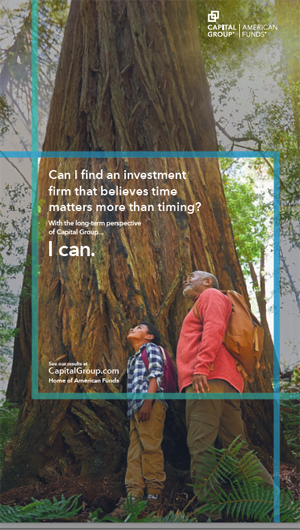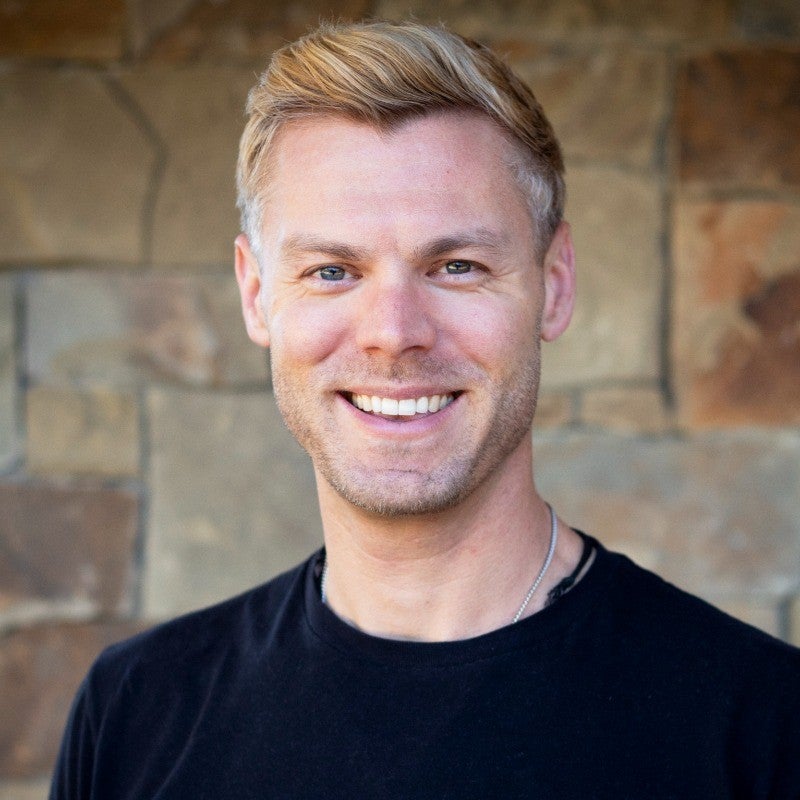Capital Group, one of the world’s oldest and largest investment management organizations with more than $1.9 trillion in assets under management, debuted its first brand marketing and television campaign in the company’s 87-year history last week.

The new campaign turns “Can I?” into “I can” and aims to inspire people to take control of their financial future.
“Our belief is that the industry’s narrative needs to refocus on investor outcomes or investor goals rather than debating the benefit or disadvantage of investing,” Jaya Kumar, Capital Group global CMO, says. “We’re trying to move the narrative of the industry away from that debate and more towards which are the best services and products that can deliver the best goals for investors.”
“Can I” stems from the insight that, globally, individuals are feeling more inspired and empowered to create positive change, including change within their own financial wellbeing. The campaign launched on broadcast television, cable networks, digital platforms, national newspapers and podcasts. The ads will be seen on high-profile shows such as NBC Sunday Night Football and 60 Minutes on CBS. Full-page ads in The Wall Street Journal and The New York Times also support the campaign launch.
Three major trends have evolved the way Kumar and his team approach marketing. The first is that investors no longer rely solely on advisors’ advice to purchase products or services, they “validate,” or research, on their own.
“Sixty-percent [of investors] today validate,” he says. “They go and check it out. The objective here is to remove that friction and to build awareness and consideration in those investors’ minds when their advisors are recommending a solution.”
In addition, a large group of advisors will retire in the next 10 years, setting the stage for Capital Group to engage with a new population of advisors.
Thirdly, there are 80 million Millennials and Baby Boomers, two very diverse groups that have one similarity important to Capital Group.
“One place both groups converge is that they like to understand the beliefs of the company that they are engaging with,” Kumar says. “In fact, they’re trying to connect their own beliefs to the beliefs of the brands that they interact with which led us to the insight that this campaign is about what we stand for, not necessarily hawking a specific product or service.”
The first five spots in the campaign introduce Capital Group and the elements that have driven the firm’s success, including company-by-company research, a focus on long-term results, a distinctive investing approach, featuring teams of experienced investment professionals and a commitment to partnering with those who help people reach financial goals.
Other articles you might enjoy:
- Drum Roll Please: The 2019 PRO Awards Finalists Announced
- ADT Brand Transformation Brings Evolution and Innovation
- How to Engage Emotionally with Individuals
Kumar says the key was to make the campaign “human.”
Working with agency Juniper Park /TBWA and its award-winning chief creative officer, Graham Lang, the team tapped sequoia trees as the inspiration to translate “I can” to creative imagery.
“We asked, ‘What is the best thing that nature demonstrates long term?’ Well, it’s the sequoia trees that are 2,000 years old. So we said OK, let’s use the sequoia as our source of inspiration,” Kumar says.
Another insight? After a divorce, 67 percent of women fire their [financial] advisers because they have not been engaged with them as an equal partner in the conversation, he says.
“There is always a guy in a suit talking to a woman, which is obviously sometimes condescending,” he says. “In fact, one of the things we were very, very thoughtful about is that women are going to control a significant part of wealth in the next 10 years and that the financial industry does an incredibly poor job of talking and engaging with them.”
The messaging is straightforward.
“We learned to use language that human beings use, not the kind of difficult to understand language used by financial services,” Kumar says. “The insight for me was that we’ve got to make it human and that’s the differentiating characteristic. It’s simple English. It stirs hopefully the heart as much as the mind. It’s not an intellectual ad.”




